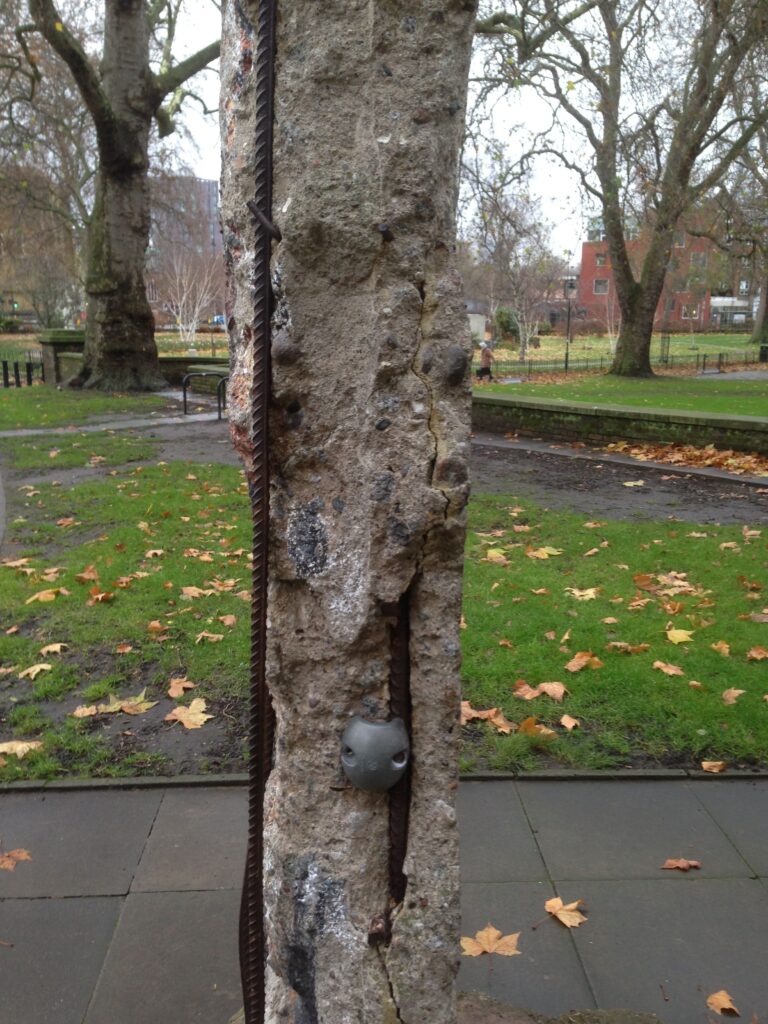This is the other project. The Company of St George has invited me to take part in an event in Schaffhouse, in late July (yes, I know it’s just May now). And the prospect has me, frankly, terrified. For me this is kind of like someone who occasionally sings a bit being invited to perform as a soloist with a full orchestra at Carnegie Hall in front of the US President and the British Queen. Or a weekend rambler attempting to climb Everest without oxygen.
I’m excited about the prospect, but also very apprehensive. It’s not the aspect of being on public display and presenting a convincing portrayal of the right social class. It’s rather that I don’t have a good feeling about most of my kit at the moment, and don’t want to embarrass the Company.
The kit challenge is not the only part of this which has me worried. I’m not entirely sure how I’m going to get to Schaffhouse, and speak no German and only the very vaguest memory of bad Australian high school French. I probably have the ability to say “S’il vous plaît” and “Danke” at the right times, but am as likely to come out with “Grazi” and “Por favour”. I may be able to drive to the site, although I’ve never driven on the right of the road.
My kit challenge is a big enough issue. The thing about my gear is that it’s virtually all been made by myself in Australia using the very limited range of cloth available there, or sourced from local suppliers who generally work with a lot less rigour (and a lot less access to originals and good research) than suppliers here in the UK and Europe. All of this is a large part of why we came over, and my intention had been to spend last year replacing most of my kit. This didn’t happen as the pressures of work, finance and sorting out my partner’s visa completely obliterated any ability to cogently and intelligently approach the problem.
So what I am going to do here, and follow up with more posts as I try to tackle this problem, is collate a list of what I need to have compared to what I have, and get it distributed to other eyes in order to gain advice in the short time I have to get this sorted out.
The Company Men’s Clothing Guide (V 1.1, 2009) is the source of the following statement of basic required kit:
Every member should aim to have the following:
Hat
To be worn at all times. Extravagant styles to be avoided!
Shirt
Linen (off-white). You should have at least two.
Braies
Linen underpants. It is usually off-white, some rare German artworks shows black braies. All male members should wear them or go without!
Doublet
Woollen, with sleeves.
Hose
Woollen, woven; cut on the bias.
Red livery jacket
A red wool company soldier’s jacket. This is the livery issue coat of the Company and every man should have one.
Sleeveless red livery jacket
Same as above without sleeves. A good alternative for warm weather or over armour.
Hood
Preferably half red, half off-white.
Shoes
Strongly made turnshoes.
Belt
A narrow belt with correct medieval buckle.
Purse
Wear a small neat purse with a minimum of useful 15th century contents: comb, money, kerchief, etc. Think of what you really need to carry.
Cloak
Not essential, but wonderful for cold weather and to sleep in. Must be of woollen cloth
Burgundian Livery
Should be worn by all active military personnel who are veterans or recruits. It should be made according to the official pattern, preferably with the woollen cloth issued by the Company or the closest one available.
Knife
Have a small general purpose one in a sheath or in your purse. Do not hang cups, spoons, bags, scissors and bits and pieces from your belt!
Eating utensils
Spoon, cup bowl and/or plate, all of 15th century design
Bedding
Blankets, sheets and a canvas bag, big enough to fill with straw as a mattress. They can all be rolled up in the canvas bag for travelling.
Armour
Soldiers should aim to acquire a helmet and a body armour (a simple jack, breastplate or brigandine) during their first year as “veterans”.
Weapons
A simple dagger or short sword is a minimum.
Washing
A piece of soap and linen towel. Everyone is allowed one small “private” bag for modern necessities.
Badges
Company badges are to be worn by full members only! No badges are to be worn on the company red jacket except the metal Co.St.Geo. shield badge. Cloth Co.St.Geo. badges may be sewn to cloaks, watch coats, etc. Other badges are restricted, and should be checked with an officer prior to wearing.
I’ll wind up doing a page or post for each of those items, with accompanying photos, but my initial thinking is thus:
Hat – I have a tall felt hat that’s reasonable, and a woollen sock hat that is ugly and silly, but also pretty good. I would be happy to get another, or reclaim the black wool ‘acorn’ hat my partner usually wears.
Shirt – I’ve replaced the too-white and too-short linen shirts that I’d brought with me with a new off-white and much longer shirt, and probably have enough of the same linen to knock up another one.
Braies – I have three or four good pairs, taken directly from older versions of the clothing guide, and now comfortably worn in. This and the shirt is probably my best kit.
Doublet – The two doublets I have are neither really of the right sort of wool, and should be replaced. I do have a good linen pour point / petticoat that I’ve just finished that I can use under my jack to hold my hose up in place of the doublets I was wearing last year.
Hose – one of the pairs I have (the green, footed ones) are not the right sort of wool, but the red ones (which have a stirrup under the foot) are ok. The trouble is that both of them are cut in what the Guide deems to be the later period style, with the seam up the back. If I could find suitable wool in a hurry, I do have the patterns for both pairs, and so could probably build a more correct pair.
Livery Jacket – I do not have this at all and would need to build it or acquire it. This has me worried, as I’m not sure about getting the correct colour.
Hood – Do not have, but this may be available from somewhere on the market
Shoes – definitely need to replace them. The turnshoes I made myself are not bad, but as they are low shoes they need footed hose. Also they have been resoled so many times by having soles clumped on, they are looking pretty battered. I have a pair of ill-fitting knee boots that are a bit early in style, Â and not really suitable.
Belt – I’ve got several good belts with simple buckles and chapes
Purse – Two that I made are not bad, and are probably acceptable, but I’m going to have a look at others as well. I’ve got a variety of handkerchiefs, dice and other bits and pieces that can go in them.
Cloak – do not have. While this is optional, I suspect it would be good to have in the evening. This is a very low priority. I do have my giant blue watch coat, which is probably ok at night without the public about, but I’d need to take the synthetic Burgundian badge off the breast.
Burgundian Livery – I’m not sure what to do here – again, I’m nervous about making this because I’m not sure I’d get the colours right, and that’s one item that would look bad to be too variant from other people.
Knife – All good here, I have a knife good for my belt as an eating knife, and a slightly larger one that’s good cooking and so on. Both are plain design, and just look like good simple ware.
Eating Utensils – I’m fine for spoons, having both horn and pewter, and have probably acceptable wooden plates and bowls. I’ve got a very good large tankard from Flaming Gargoyle, but it may be a bit large to transport and a smaller cup would be good.
Bedding – I will have to find out how authentic this needs to be. If I can lay my hands on canvas, this should be achievable. If not, I’m going to need that cloak and hope to find a rock to use as a pillow.
Armour – Thanks to Paul, I’ve got a good jack that fits me (the one I made in Australia was a lovely fit, until I grew out of it around the middle), and the breastplate over it is fine – when I had it made, I deliberately went for a very simple style. I replaced the sallet last weekend with a nice Burgundian styled one from Rebellum Armouries, and the gauntlets I have are good, albeit a little fancy for the rest of my kit. For most purposes I’m happy just to go bare handed or wear the three-fingered mittens (deer skin) that I made. I don’t think I need to adjust any of this other than take the St George cross back off the Jack sleeve. The mail standard around my throat is split ring, not riveted, so if I could not replace that easily I would just be leaving it behind.
Weapons - I have no idea, and will have to enquire, whether they want live weapons or blunted. The baselard  I have which is not bad, and my arming sword, are ok but rebated. The scabbards for both are rubbish, although the belt for the sword scabbard is good.
Washing – should be ok if I can find a linen towel for sale somewhere.
Badges – we don’t need no steeenking badges. I’d not take any with me, and would leave my somewhat rude hat badge off.
So there you go. I’m finding this profoundly daunting, and it’s scaring me.
If it comes to it, and I cannot get this sorted, I’ll pull out, or else offer to go at the end of the event to meet people and help with the pack up. The one thing I do not want is to do anything or present anything which would embarrass my hosts.




